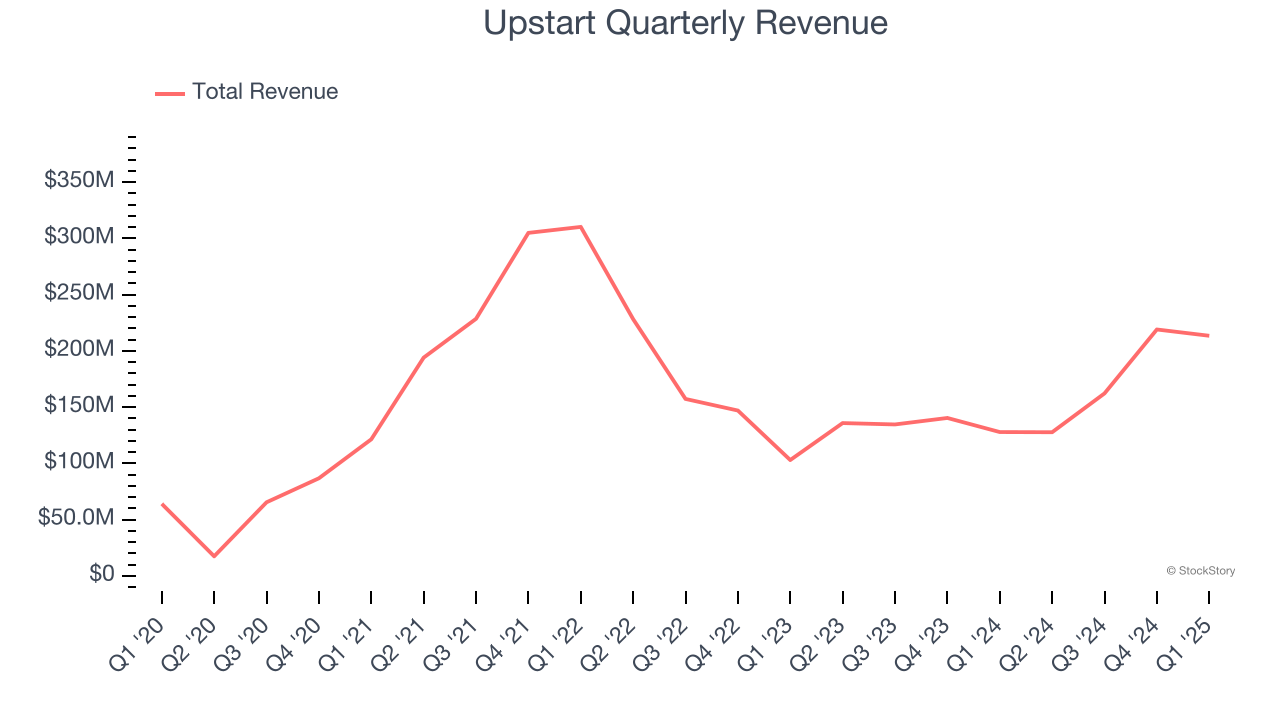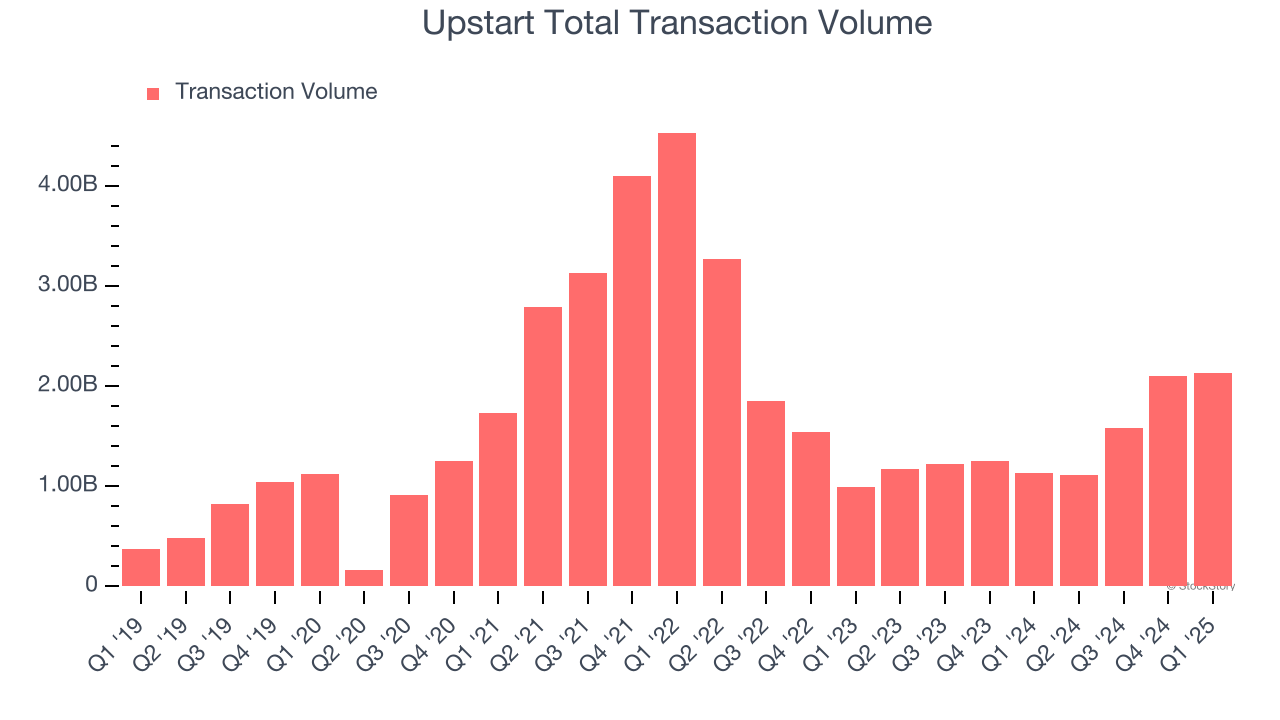
AI-powered lending platform Upstart (NASDAQ:UPST) beat Wall Street’s revenue expectations in Q1 CY2025, with sales up 67% year on year to $213.4 million. On the other hand, next quarter’s revenue guidance of $225 million was less impressive, coming in 1.6% below analysts’ estimates. Its non-GAAP profit of $0.30 per share was 75.9% above analysts’ consensus estimates.
Is now the time to buy Upstart? Find out by accessing our full research report, it’s free.
Upstart (UPST) Q1 CY2025 Highlights:
- Fortress has agreed to purchase up to $1.2 billion of consumer loans originated on the Upstart platform through March 2026
- Revenue: $213.4 million vs analyst estimates of $202.8 million (67% year-on-year growth, 5.2% beat)
- Adjusted EPS: $0.30 vs analyst estimates of $0.17 (75.9% beat)
- Adjusted EBITDA: $42.58 million vs analyst estimates of $25.58 million (20% margin, 66.5% beat)
- The company slightly lifted its revenue guidance for the full year to $1.01 billion at the midpoint from $1 billion
- EBITDA guidance for Q2 CY2025 is $37 million at the midpoint, above analyst estimates of $29.61 million
- Operating Margin: -2.1%, up from -52.8% in the same quarter last year
- Free Cash Flow was -$19.65 million compared to -$129.4 million in the previous quarter
- Market Capitalization: $4.94 billion
Company Overview
Founded by the former head of Google's enterprise business, Upstart (NASDAQ:UPST) is an AI-powered lending platform facilitating loans for banks and consumers.
Sales Growth
Reviewing a company’s long-term sales performance reveals insights into its quality. Any business can put up a good quarter or two, but many enduring ones grow for years. Over the last three years, Upstart’s demand was weak and its revenue declined by 11.4% per year. This wasn’t a great result, but there are still things to like about Upstart.

This quarter, Upstart reported magnificent year-on-year revenue growth of 67%, and its $213.4 million of revenue beat Wall Street’s estimates by 5.2%. Company management is currently guiding for a 76.3% year-on-year increase in sales next quarter.
Looking further ahead, sell-side analysts expect revenue to grow 48.4% over the next 12 months, an acceleration versus the last three years. This projection is eye-popping and implies its newer products and services will spur better top-line performance.
Unless you’ve been living under a rock, it should be obvious by now that generative AI is going to have a huge impact on how large corporations do business. While Nvidia and AMD are trading close to all-time highs, we prefer a lesser-known (but still profitable) stock benefiting from the rise of AI. Click here to access our free report one of our favorites growth stories.
Total Transaction Volume
Total transaction volumes show the aggregate dollar value of loans processed on Upstart’s platform. This is the number from which the company will ultimately collect fees, and the higher it is, the more accurate its software becomes at assessing credit risk.
Upstart’s transaction volume punched in at $2.13 billion in Q1, and over the last four quarters, its growth was fantastic as it averaged 45.2% year-on-year increases. This alternate topline metric grew faster than total sales, meaning its loan processing fees outpaced the interest income from loans retained on its balance sheet. If this trend continues, it would lower Upstart’s risk profile as it would reduce its exposure to delinquencies and defaults. 
Customer Acquisition Efficiency
The customer acquisition cost (CAC) payback period measures the months a company needs to recoup the money spent on acquiring a new customer. This metric helps assess how quickly a business can break even on its sales and marketing investments.
Upstart’s recent customer acquisition efforts haven’t yielded returns as its CAC payback period was negative this quarter, meaning its incremental sales and marketing investments outpaced its revenue. The company’s inefficiency indicates it operates in a competitive market and must continue investing to grow.
Key Takeaways from Upstart’s Q1 Results
The results were good, but the stock is cratering on the announcement that Fortress has agreed to purchase up to $1.2 billion of consumer loans originated on the Upstart platform through March 2026. This raises questions about balance sheet health (Upstart needs liquidity) and future lending capacity. The stock traded down 15.3% to $43.56 immediately after reporting.
Should you buy the stock or not? If you’re making that decision, you should consider the bigger picture of valuation, business qualities, as well as the latest earnings. We cover that in our actionable full research report which you can read here, it’s free.
